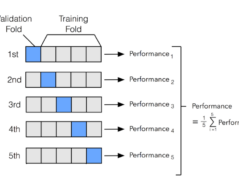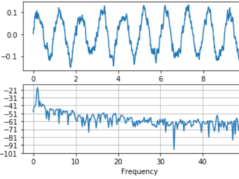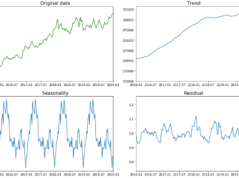
Decision Trees in Financial Markets: Unlocking the Powerhouse of Predictive Analysis
Introduction to Decision Trees
In the dynamic world of financial markets, every decision, every calculated risk, and every analyzed outcome matter. This complexity increases in a multi-faceted Indian Market. Enter decision trees - the power tools that offer a structured, visual approach to unpack complex decisions and aid in navigating the turbulent financial landscape.
Understanding Decision Trees
What are Decision Trees?
Decision trees are flowchart-like structures. At a fundamental level, each internal node in the tree symbolizes a decision, each branch a subsequent outcome, and each leaf node the final result. The simplicity and strength of decision trees lie in their ability to depict complicated decision-making scenarios in a clear, comprehendible pathway.
How Do Decision Trees Work?
The starting point, the root, stands for the initial decision. The branches that emerge from this root portray the possible outcomes or decisions resulting from the initial choice. The leaves, located at the end of each branch, signal the culmination of that particular decision path.
ID3 Decision Tree Algorithm
The Iterative Dichotomiser 3 (ID3) algorithm holds a unique place among decision tree algorithms. This classic algorithm is pivotal for decision tree construction. It utilizes the concepts of entropy and information gain to decide where each node splits, facilitating a more nuanced understanding of the decision paths.
Application in Financial Markets
Decision trees play a critical role in various aspects of financial markets.
- Risk Management: Decision trees assist in efficiently quantifying and evaluating potential risks, enabling firms to navigate through uncertain financial conditions and enabling robust decision-making.
- Investment Strategies: Decision trees offer a systematic approach in the context of diverse investment scenarios and potential returns. This is especially useful in the Indian market, characterized by various economic factors that consistently influence the investment environment.
Examples and Solutions
For a concrete illustration, you can imagine a firm thinking about investing in a new stock. The decision tree for this scenario would look like this:
- Root: Symbolizes the initial decision, i.e., to invest or not.
- Branches: Illustrate the possible scenarios such as market acceptance, average performance, or failure.
- Leaves: Indicate the outcomes such as profit, break-even, or loss.
The firm can choose the path that offers the highest expected profitability by assigning probabilities to each scenario and calculating the expected returns for each decision path.
Advanced Decision Tree Techniques
While basic decision trees offer significant insights, advanced decision tree techniques take this further.
- Random Forest: This technique constructs multiple decision trees and aggregates their predictions. This collection of decision trees ('forest') helps reduce overfitting and increases overall prediction accuracy.
- Gradient Boosting: A step from Random Forest, Gradient Boosting builds trees sequentially. Each new tree aims to correct the errors made by the previous trees, enhancing prediction accuracy.
- XGBoost: Standing for "Extreme Gradient Boosting," this is an advanced implementation of the Gradient Boosting algorithm. It is designed for speed and performance, providing a robust model that efficiently handles various data types, missing values, and scales.
These advanced techniques offer a sophisticated way of making predictions and decisions, enabling users to handle complex financial scenarios more easily and accurately.
Conclusion
Decision trees, with their simplicity and robust predictive power, stand as invaluable tools in financial markets. From risk management to devising investment strategies, their application is far-reaching. Despite their limitations, such as potential oversimplification or unwieldiness with numerous variables, the advanced techniques offer remedies and enhancements, making decision trees indispensable in the financial sector.
As we delve deeper into the era of data-driven decision-making, tools like decision trees, and their advanced counterparts, will only rise in importance. Remember, a decision tree in financial markets isn't just a predictive model; it's the compass that helps navigate the sea of financial uncertainty, guiding towards informed decisions and anchoring investments in the harbour of success.
Follow Quantace Research
-------------
Why Should I Do Alpha Investing with Quantace Tiny Titans?
1) Since Apr 2021, Our premier basket product has delivered +40% Absolute Returns vs the Smallcap Benchmark Index return of +7%. So, we added a 33% Alpha.
2) Our Sharpe Ratio is at 1.4.
3) Our Annualised Risk is 20.1% vs Benchmark's 20.4%. So, a Better ROI at less risk.
4) It has generated Alpha in the challenging market phase.
5) It has a good consistency and costs 6000 INR for 6 Months.
-------------
Disclaimer: Investments in securities market are subject to market risks. Read all the related documents carefully before investing. Registration granted by SEBI and certification from NISM in no way guarantee performance of the intermediary or provide any assurance of returns to investors.
-------------
#future #machinelearning #research #investments #markets #investing #like #investment #assurance #management #finance #trading #riskmanagement #success #development #strategy #illustration #assurance #strategy #mathematics #algorithms #machinelearning #ai #algotrading #data #financialmarkets #quantitativeanalysis #money






